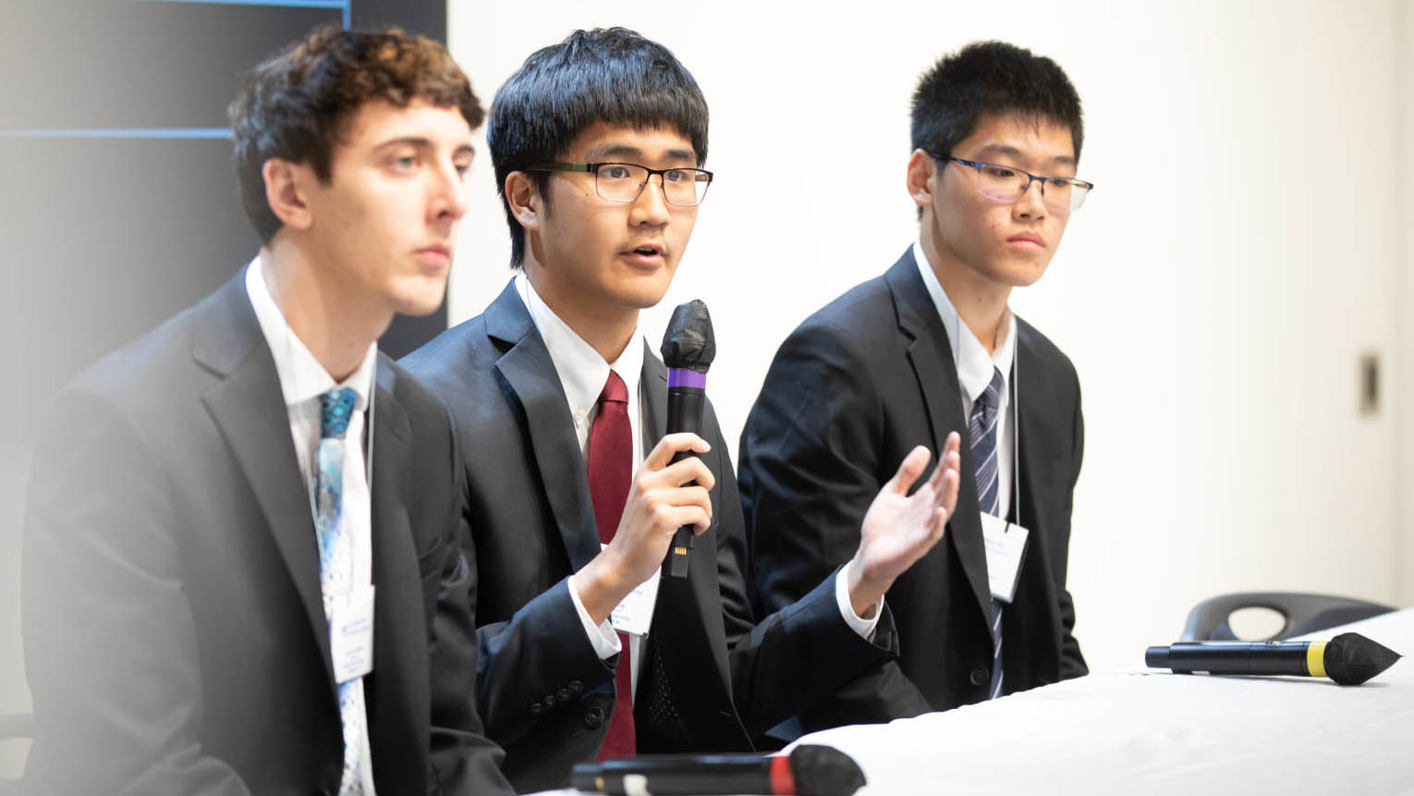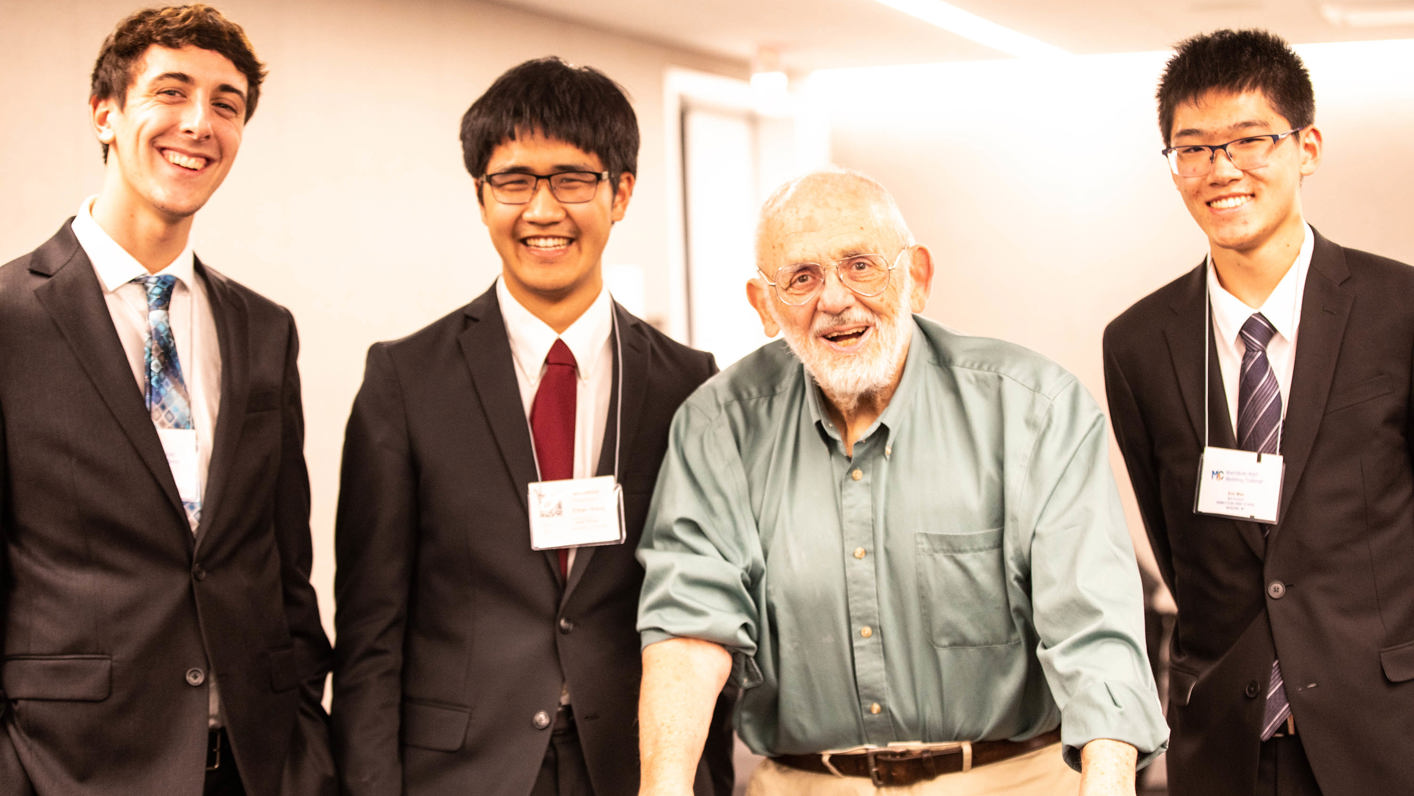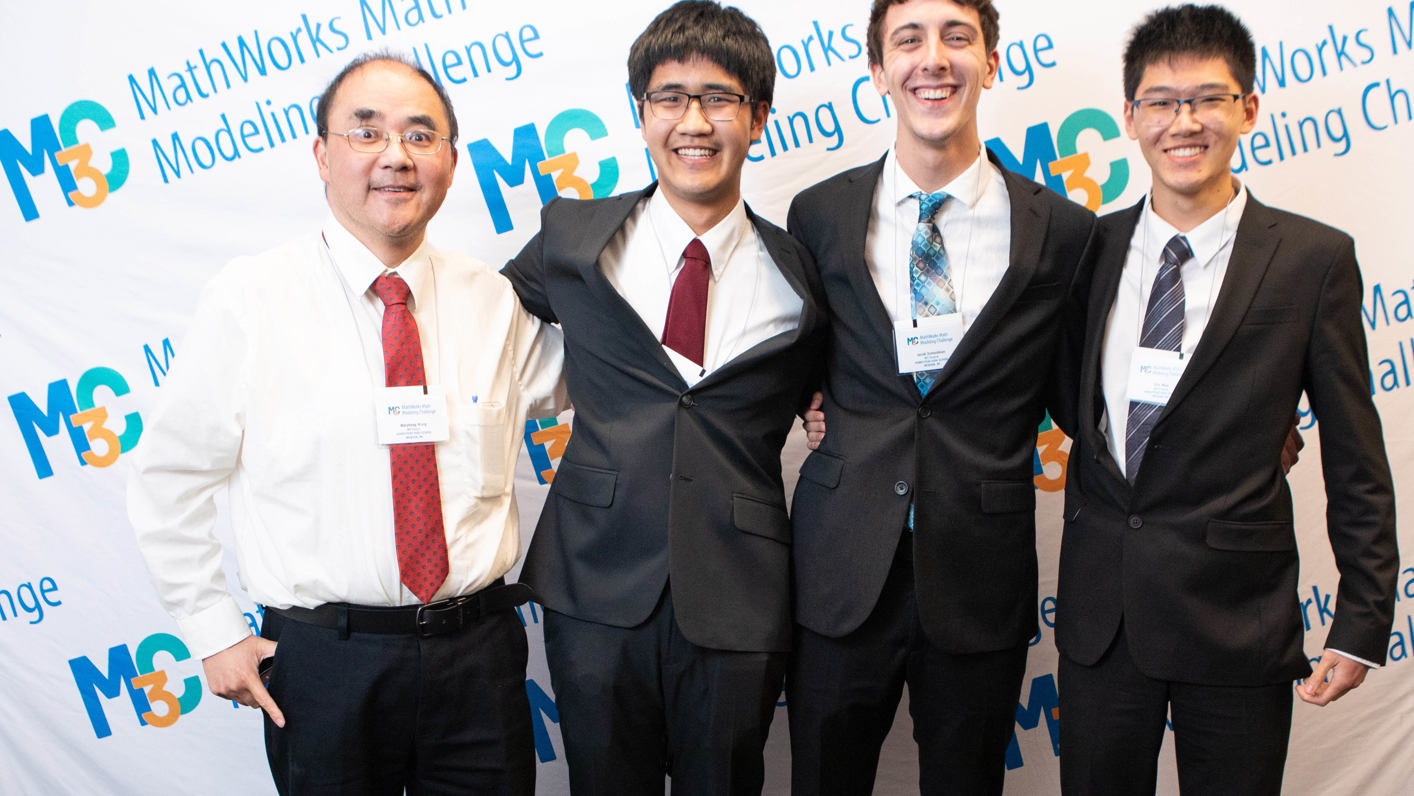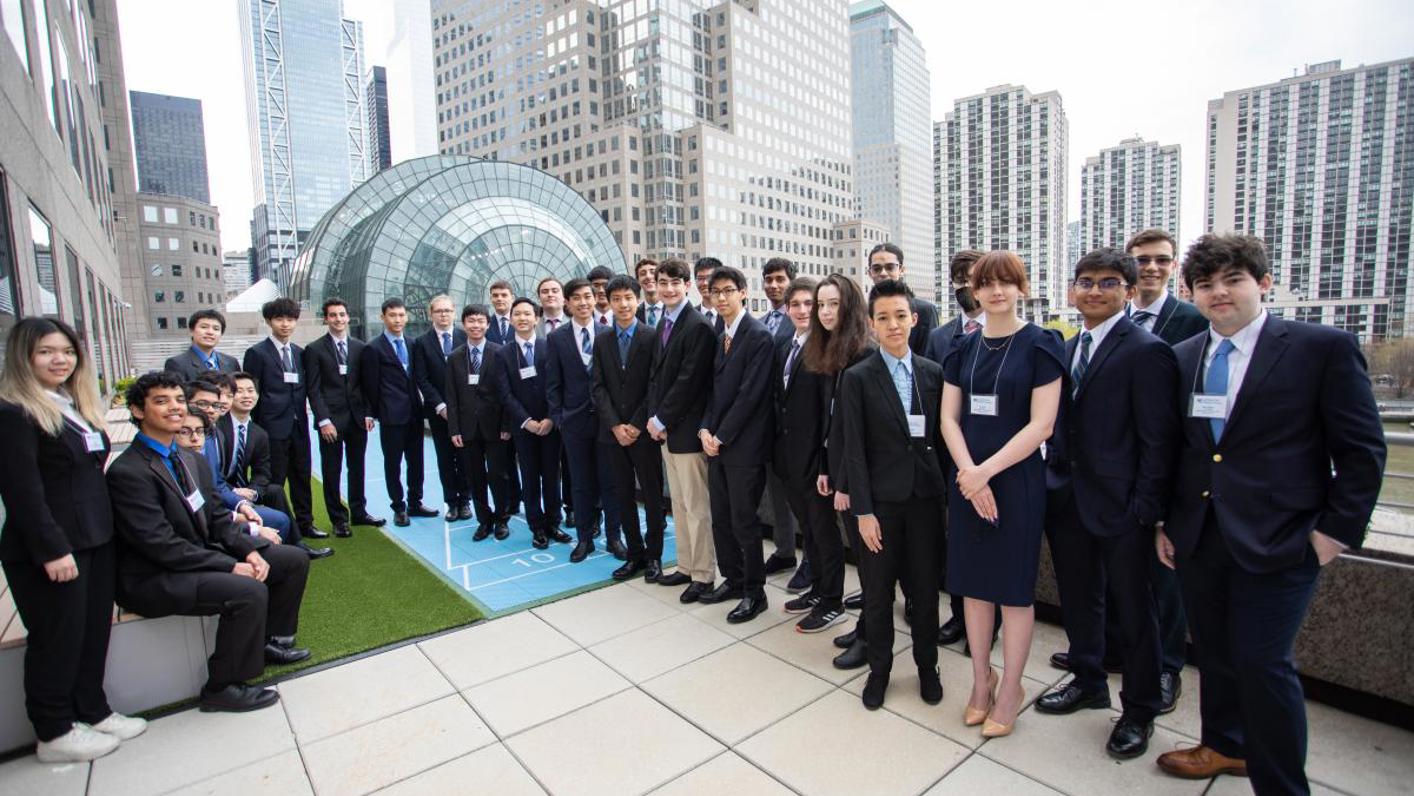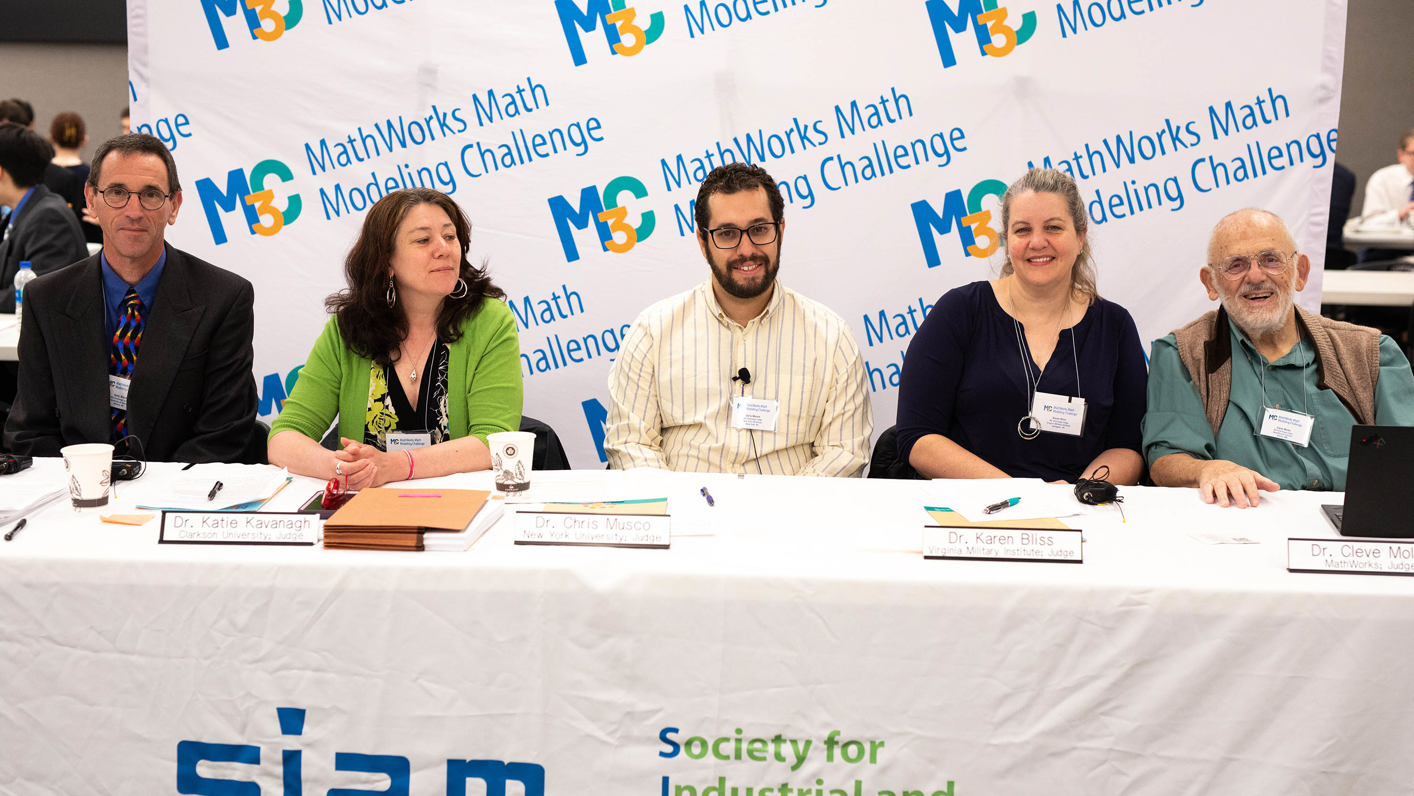Wisconsin High Schoolers Honored for First-place Mathematical Model of Telecommuting Tendencies
2022 MathWorks Math Modeling Challenge Explores the Future of Remote Work
Despite previous industry predictions that large numbers of employees would begin telecommuting in the 1990s and 2000s, only about 5.5 percent of Americans and 4.7 percent of U.K. residents routinely worked from home in 2019. However, the onset of COVID-19 in early 2020 marked a discernable shift towards remote work as offices around the world shuttered their doors and many people began telecommuting out of necessity. More than two years later, both employers and employees must make difficult decisions regarding an eventual return to the physical workplace. Some companies are offering flexible options for hybrid or remote work, while others are encouraging staff to return to the traditional office setting. Meanwhile, numerous factors—such as age, travel time, childcare obligations, and societal pressure—impact employees’ willingness to commute to the office.
“We think a lot about the COVID-19 pandemic and the potential short- and long-term impacts,” Chris Musco, an assistant professor of computer science and engineering at New York University, said. “Remote work stands out as a big question mark. There has clearly been a huge shift towards telecommuting, but the verdict seems out on whether this shift will stick around.”
The nuanced complexity of remote work made it a pertinent topic for the MathWorks Math Modeling Challenge (M3 Challenge): an annual mathematics competition that is a program of SIAM with MathWorks as its title sponsor. 2022 marked the 17th year of the student contest, during which participating high school juniors and seniors in the U.S. and sixth form students in England and Wales compete for more than $100,000 in scholarship money. Teams of three to five students work together over 14 consecutive hours during Challenge Weekend to address a complicated, real-world problem with mathematical modeling and report their findings in a 20-page solution paper; three Technical Computing Awards are also available for groups that choose to write or employ outstanding code as part of their responses. Over 125 Ph.D.-level applied mathematicians then evaluate the papers during several rounds of blind judging to determine the finalists. This year, the top teams traveled to New York City in late April and presented their solutions to a live panel of judges at the offices of Jane Street, a quantitative trading firm.
Musco—a 2008 M3 Challenge winning alumnus—was the primary author of the 2022 Challenge problem, with assistance from the M3 Challenge Problem Development Committee. The problem questioned whether remote work is “fad or future,” a topic that many students have experienced firsthand in their own educational endeavors over the last few years. “A number of factors make this a strong topic for the Challenge,” Musco said. “The topic should have a lot of data and resources available, and both the U.S. and U.K. have government organizations that collect a ton of interesting data on workers — what jobs they do, how they work, where they work, and so forth. We also try to consider what mathematical tools might be used to solve the problem, and make sure that many interesting possible angles exist.”
The Challenge problem asked students to create a model to estimate the percentage of workers in five U.S. and U.K. cities whose jobs are currently remote-ready, then calculate the percentage of remote-ready positions that will exist in 2024 and 2027. Next, they were tasked with generating a model that predicts whether an individual with the ability to telecommute will be allowed and choose to do so. Finally, participants approximated the percentage of employees in the U.S. and U.K. who will actually work remotely in 2022, 2024, and 2027, then ranked the cities in terms of magnitude of impact.
This year’s first-place team hails from Homestead High School in Mequon, Wis., and comprised Adam Garsha, Jacob Schmidman, Eric Wan, and Ethan Wang; Schmidman, Wan, and Wang represented the group at the M3 Challenge Final Event in New York City. The students began by examining previous remote-readiness trends for jobs in different industries and sub-industries. They then fitted this data to a linear regression to predict future remote readiness of the workforce in Seattle, Wash.; Omaha, Neb.; Scranton, Pa.; Liverpool, England; and Barry, Wales. This approach allowed them to avoid the bias of economic booms or busts, which follow unpredictable cycles. “Linear regression is a simple model that captures the general trend of job growth without overfitting to smaller variations in data,” Wan said. “Since the time frame for extrapolation was small, we thought it was acceptable to use.”
The team did not find significant changes in any of the five cities from 2022 to 2027 — a result that they attributed to the difficulty of altering a city’s industrial structure in the short term. Specifically, they found that the remote readiness of Seattle, Omaha, Scranton, and Barry would respectively increase from 41.50 to 41.94 percent, 41.04 to 41.51 percent, 33.84 to 33.94 percent, and 46.62 to 46.98 percent, while Liverpool’s remote readiness would decrease from 28.02 to 27.22 percent.
Next, the Homestead students investigated whether a worker in a remote-ready position will indeed work from home. “We approached this problem through an economic lens,” Garsha said. “We decided to quantify the decision to work from home using dollars. Working from home will occur if the combined benefit to the worker and employer is positive. Even if one party suffers a negative outcome, the other’s positive gain can offset the negative during negotiations.”
Garsha and his teammates consulted external data from outside sources and ran a Monte Carlo simulation over one million times. The simulation considered several factors from the perspectives of both the employer and employees. “On the employer side, we considered the change in worker productivity,” Wang said. “On the worker side, we considered the benefit of no commute time and no need for childcare. In a future version of the model, more factors can be considered to increase the robustness.”
The students then imagined two example workers with different personal situations and computed the likelihood that each would telecommute. They predicted that an individual who makes $30/hour with two kids, an eight-hour workday, and a 30-minute commute will work from home more than 99 percent of the time. In contrast, an individual who makes $50/hour with no children, a 10-hour workday, and a one-hour commute has about a 74 percent chance of working from home.
Finally, the Homestead team multiplied the percentage of remote-ready jobs by the percentage of employees who will actually work from home to estimate the total percentage of workers who will telecommute in 2022, 2024, and 2027 in Seattle, Omaha, Scranton, Liverpool, and Barry. To measure the effects of the shift to remote work in these cities, the students calculated an impact factor that was based on several components. “We considered the environmental benefit of reduced carbon emissions from commuting and the economic loss of reduced property taxes paid to the city,” Schmidman said. “We then combined these factors and relativized them based on each city’s gross domestic product.” A higher impact factor signifies a greater effect, and Schmidman and his collaborators found that Liverpool experienced the highest impact while Omaha had the lowest.
All four members of Homestead’s winning team, who collectively received $20,000 in scholarship funds for their top-notch solution, are high school seniors who participated in M3 Challenge last year as well — a circumstance that better equipped them for the 2022 event. Three of the students plan to pursue careers in applied mathematics, computer science, and mechanical engineering, while the fourth hopes to attend law school. Yet regardless of their future areas of study, the participants all concurred that M3 Challenge provided valuable tools that they will take with them to college and beyond. “Participating in M3 Challenge has given me unbelievable experiences,” Wang said. “Aside from the obvious benefits in math, I have had increased experience with collaboration, communication, time management, data collection, data interpretation, and so much more. All of these skills will be very beneficial.”
Homestead High School—coached by Weizhong Wang, the father of team member Ethan Wang—has a long history of competing in M3 Challenge. In the last five years, the school received three honorable mentions. However, 2022 was the first year in which they were selected as a finalist and nabbed the top spot. “Our students value their experiences with M3 Challenge very highly,” Coach Wang said. “That is why we keep doing it year after year. In my opinion, modeling has been and will continue to be one of the most powerful tools offered by mathematics. As our society becomes more connected and collaborative, data-driven decision-making becomes more important in our lives. And mathematical modeling is the foundation.”
M3 Challenge is a unique, rigorous contest that goes well beyond the traditional high school mathematics curricula and seeks to prepare students for a data-oriented future. It allows teams to apply math modeling to real-world phenomena and conduct research, analyze data, and make supported predictions with broad societal significance. “In school, math is always about convergent thinking,” Schmidman said. “When presented with a problem, you’re looking for a single, definite answer and there’s often only one way to find it. Conversely, M3 Challenge asks participants to partake in divergent thinking. You have to be creative, and there’s potentially infinite solutions and ways to get there.”
Homestead High School’s winning solution paper is available online, as is their final presentation.
About the Author
Lina Sorg
Managing editor, SIAM News
Lina Sorg is the managing editor of SIAM News.

Stay Up-to-Date with Email Alerts
Sign up for our monthly newsletter and emails about other topics of your choosing.





